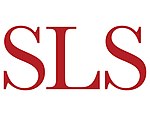Braun Music Center
Buildings and structures completed in 1921Santa Clara County, California building and structure stubsStanford University buildings and structuresTourist attractions in Santa Clara County, California

Braun Music Center is a music education building at Stanford University in California. Opened in 1984, the Braun Center serves as the link between the student residential area and the main activities center. As the main building for the Department of Music, Braun is the venue for the department's concerts and recitals and offers rehearsal studios and practice facilities as well as classrooms and offices. Department of Music events are held in Braun's Campbell Recital Hall and Dinkelspiel Auditorium. Braun also houses the Stanford University Music Library and Recorded Sound.
Excerpt from the Wikipedia article Braun Music Center (License: CC BY-SA 3.0, Authors, Images).Braun Music Center
Lasuen Mall,
Geographical coordinates (GPS) Address Nearby Places Show on map
Geographical coordinates (GPS)
| Latitude | Longitude |
|---|---|
| N 37.423888888889 ° | E -122.16944444444 ° |
Address
Braun Hall
Lasuen Mall 541
94305
California, United States
Open on Google Maps







